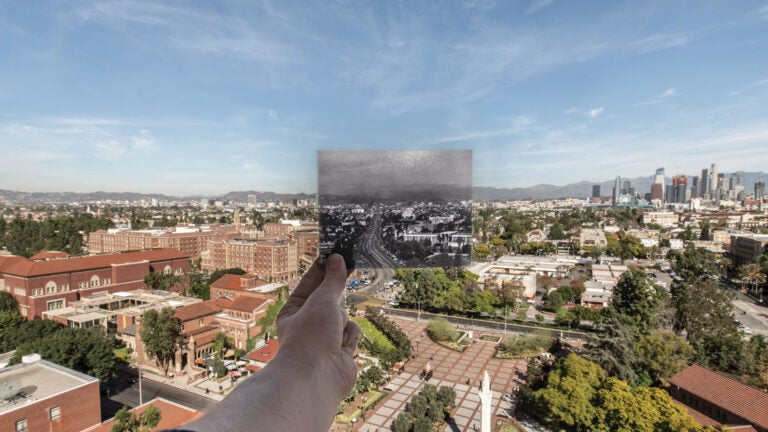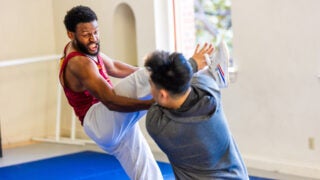
(Photo/Dustin Snipes)
A Half-Century Redraws the Landscape North of USC’s Campus
Though the area north of the University Park Campus has changed, some landmarks remain timeless.
The view northward from Waite Phillips Hall, the 12-story home of the USC Rossier School of Education, has changed steadily in the building’s 50 years—and over USC history. While a half century redrew the landscape of Los Angeles and the University Park Campus neighborhood, the bend in Hoover Street is still instantly familiar in this inset photo taken in the 1970s. In the foreground of the photo, the white pillars and swooping entryway of Hebrew Union College, established in 1954, are also recognizable.
When this snapshot of the north side of the USC University Park Campus was taken, the 1.25 million square feet bound by Hoover Street, Jefferson Boulevard, McClintock Avenue and 30th Street held the University Village shopping center. Opened in 1976, the open-air mall launched a new chapter in USC history, helping to revitalize the USC neighborhood. Trojans flocked to “the UV” to watch movies and shop at its retailers. Over the years, students bought their groceries at 32nd Street Market and Superior Grocers. They picked up men’s clothes at Silverwood’s or booked their flights home at STA Travel.
The view underwent another transformation with the opening of USC Village in August 2017. The complex’s eight residential colleges are home to a vibrant community of more than 2,500 students and dozens of eateries and shops. On the first Friday of each month, USC Village’s central piazza boasts decor and buzzes with cultural events to celebrate an international city. On other days, you’ll find everything from neighborhood shoppers to students jogging along the paseos, bringing new life into the area.
Interested in learning more about this piece of USC history? Visit our story on the land below USC Village.



